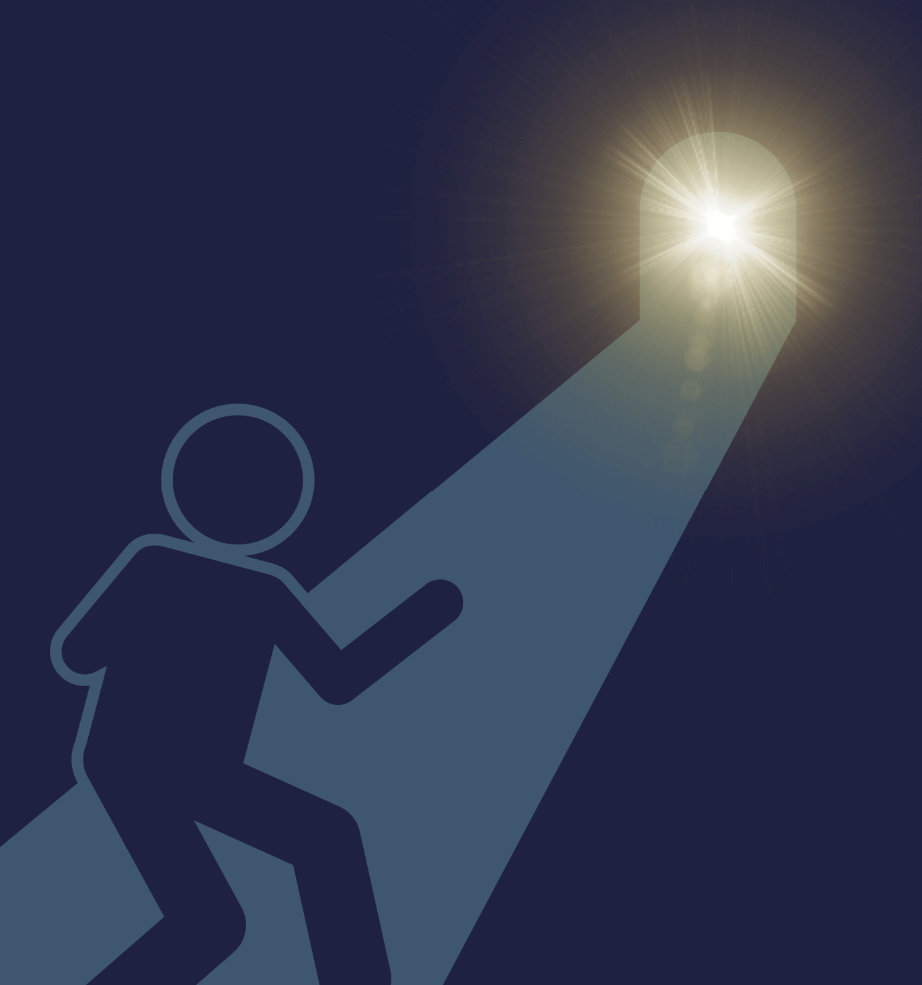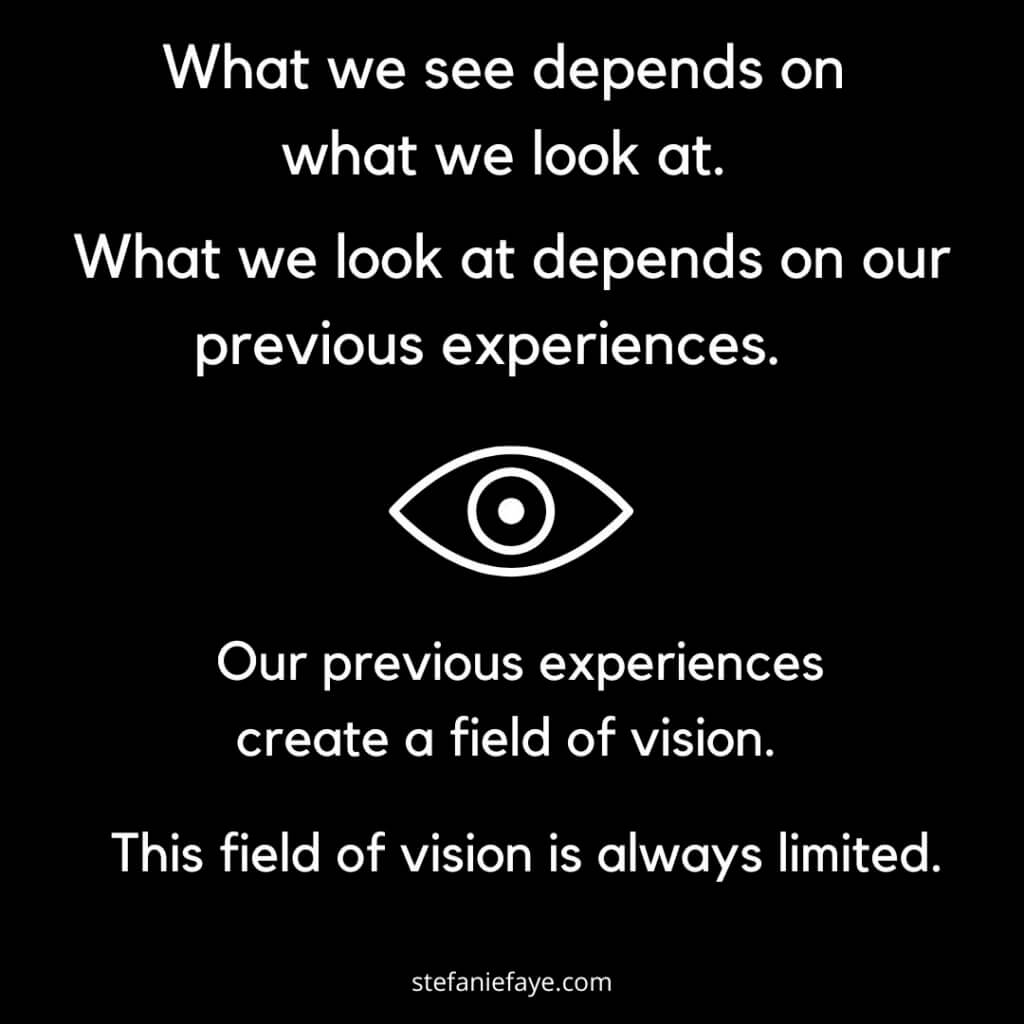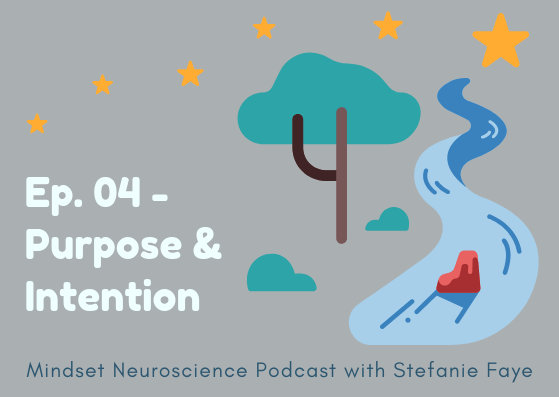"What a person sees “depends both upon what he looks at and also upon what his previous visual-conception experience has taught him to see.”
― Thomas S. Kuhn, The Structure of Scientific Revolutions

No matter what kind of research I am leading for an organization, or facilitating a workshop - whether it’s for leaders and CEO’s, symphony orchestra players, FBI personnel, celebrity authors and performers,, K-12 teachers or holistic practitioners… what emerges again and again (and again)... is the concept of MINDSET.
Without addressing Mindset, we miss an opportunity to spark LONG-LASTING, INTERNALLY MOTIVATED changes in behavior that are more adaptive and helpful for people in the long run.
It’s a complex topic. And because of how much it keeps emerging, I am going to send you a few articles over the next couple weeks to dive into it.
There are many ways we can talk about mindset...
Mindset is intertwined with the idea of predictive models, predictive algorithms, beliefs, paradigms, and neural activity that filters how we perceive and process information from the world around us and within us
Johnson-Laird (1983) is known as one of the foremost authorities of mental model theory. He describes mental models as:
“small-scaled models of reality”
Systems theorist Peter Senge (1990) described mental models as:
“...deeply ingrained assumptions, generalizations, or even pictures or images that influence how we understand the world and how we take action”.
But no matter how we talk about and try to explain Mindset - the truth is that what matters to us is how it plays out in our actual day-to-day, moment-by-moment experience.
It doesn’t matter how much we ‘know’ - in an intellectual sense - about mindset… the question is, what do we actually DO with that knowledge?
As complex adaptive systems, one of the most useful ways we can use knowledge or tools is to help us ADAPT. Adaptation is connected with our ability to UPDATE our action-sequences based on incoming information - in order to better align with our goals, desires and needs.
Becoming aware of our mindset gives us an ability to update 2 key things:
- WHAT we notice, and
- HOW we interpret what notice
Noticing these two things gives us a chance to choose from new possibilities of actions. This is where change occurs. This is what we could call a Mindset Shift.
A great example comes from one of my favorite attachment experts, Gordon Neufeld. He explains that if our paradigm or mindset related to how we see a child acting out is that it is because they are a jerk or inherently ‘bad’, how we react will reflect that logic. If our mindset shifts into one that sees that child as overwhelmed by their own emotions and doesn’t know how to operate within that, our responses will be different than if we use the previous lens/filter/paradigm/mindset.

Our Mindset guides our beam of awareness.
And that beam will either illuminate a wider field of possibilities for explaining what we see, or it will narrow that field onto something we already predict.
The key point here is that Mindset Matters… it is the driving force, the lens through which we see ourselves - including what happens when we make a mistake, put ourselves out there and interact with others.
Mindset is also the lens through which we predict, perceive and interpret the world around us - including people’s words, faces, voices, and behaviors.
The beauty of a Mindset Shift is that once we notice something new, it becomes harder to go back to not noticing it.
This is also where we can get UNCOMFORTABLE..
Because sometimes noticing that we’ve been stuck in a repetitive pattern can make us feel hopeless or bad about ourselves.
But the good news is that the very first moment of a mindset shift - the NOTICING of something you didn’t notice before - activates powerful brain circuits that now have a chance to join the game. These new circuits offer you a chance to notice something new. Noticing something new gives you a chance to CHOOSE something new in terms of your next move, thought or reaction.
This doesn't mean you’ll suddenly have a completely new set of behaviors, thoughts and feelings… but it’s the first step (and a necessary one) to updating our patterns into ones that are more flexible and accurate - rather than reflexive, repetitive and outdated.
Here’s an activity to build our Noticing Circuits and expand our field of awareness:
- From wherever you are sitting right now, turn your head to the right and allow your eyes to land and gaze on something in your field of vision.
- Really notice the slowing down and landing of your eyeballs onto something that is there to the right of you. Maybe it’s the grain of wood on the wall or furniture, maybe it’s dust particles floating in the air, the texture of some fabric, carpet, material.. Whatever it is - let your eyes take it in.
- What does it feel like to use your eyeballs to move and then land and gaze onto something, and soak it in? Does it feel like stillness in your body? Does your mind launch into something else very quickly? Where do your eyeballs go next?
Just taking a moment to do this is a ‘work out’ for some of the voluntary muscles that guide the instruments we use to create our field of awareness. Doing this workout regularly can build brain-body connections that help us pause and interrupt some of the repetitive ways we think and notice our environments.
COMING SOON: DEEP DIVES INTO MINDSET
Over the course of these articles, we’ll explore how mindsets are formed, the visceral, embodied* aspects of Mindsets and what can block us from sparking Mindset Shifts -in ourselves and others.
*A key missing factor of a lot of Mindset talk is the BODY.. the body is a massively important part of mindset and the more we an include it in our understanding, the better chance we have at updating and shifting our mindset.
"You could say paradigms are harder to change than anything else about a system, and therefore this item should be lowest on the list, not second-to-highest. But there’s nothing physical or expensive or even slow in the process of paradigm change. In a single individual it can happen in a millisecond. All it takes is a click in the mind, a falling of scales from eyes, a new way of seeing."
-Donella Meadows, Thinking in Systems
If you love this topic, you’ll love my free workshop on October 8th 🙂
You can already register here (if you can’t attend live, you’ll get the recording). This is one of my favorite workshops!
References
Johnson-Laird, P.N., Girotto, V. & Paolo Legrenzi, P. (1998). Mental models: a gentle guide for outsiders. http://www.si.umich.edu/ICOS/gentleintro.html
Kuhn, T. S. (1962). The structure of scientic revolutions (1st ed.). Chicago: University of Chicago Press.
Meadows, D. H. (2015). Thinking in Systems. Chelsea Green Publishing.
Neufeld Institute - Gordon Neufeld (neufeldinstitute.org)
Senge, P. M. (1990). The fifth discipline: The art & practice of the learning organization. New York: Doubleday


